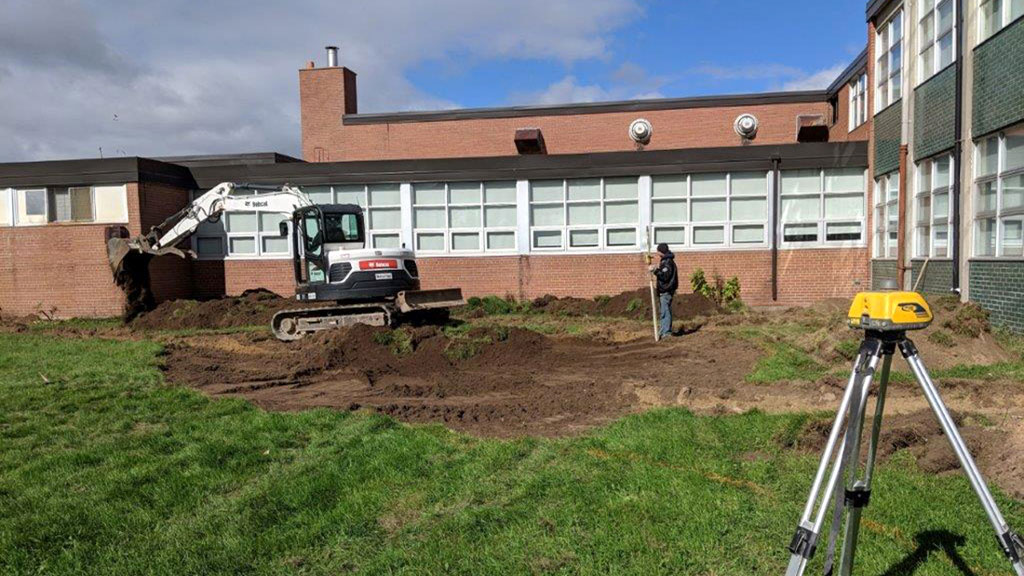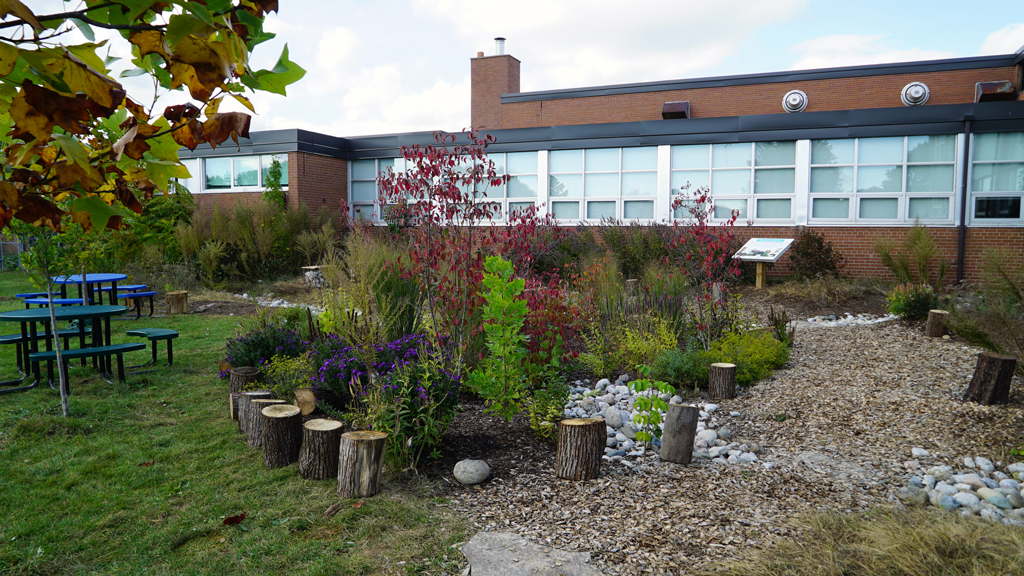After establishing three school rain gardens, including Canada’s largest, Credit Valley Conservation is embarking on an ambitious program to build six more in Ontario’s Peel Region.
Intended to reduce the flow of stormwater into municipal drains, help beautify school yards, and engage teachers and students, “rain gardens are a small slice, but an important slice,” in lessening the detrimental impact of stormwater pollutants, says Kyle Vander Linden, the authority’s integrated water management program manager.
Comprised of shrubs, flowers and grasses planted in shallow areas, they slow down, soak up and filter rainwater from rooftops, driveways and parking lots before it flows into local catchbasins and municipal drains. They keep streams, rivers and lakes clean, while also beautifying neighbourhoods and reducing localized flooding, he says.
Five years ago the authority installed its first school rain garden at Kenoille Public School in Brampton in partnership with the Peel Board of Education. A second one was created at the Allan A. Martin School in Mississauga in 2018.
Then, in 2019, it led the design and construction of a 965-square-metre garden on the grounds of Glendale Public School in Brampton.
Considered the largest of its kind in the country, the garden addressed a major drainage problem on the property and can filter and cool up to 6,000 square metres of stormwater, which is the equivalent of 2.5 Olympic size swimming pools, he says.
The project generated a lot of interest and was the catalyst for the authority to submit an application for a $100,000-grant from the Federal Department of Environment and Climate Change through the EcoAction Community Funding Program to install six more. The grant was approved this past December.

“Three of the gardens are currently in design and will be built in the fall, while the other three will also be designed this fall, and then built in 2022.”
They will be designed and built to “Fusion Landscape” or low impact principles. Although they won’t be engineered to the same degree as Glendale, their creation will be a little more complicated and intensive than it might seem to those unfamiliar with the concept.
It’s a process that begins with geographic information system (GIS) analysis comprised of a series of layers including the use of aerial photographs, surface contour lines and the identification of local stormsewer network, drainage areas and stormwater flow paths.
That analysis is combined with onsite field assessments to determine issues such as site constraints, erosion, possible locations and ground truthing, the technical term referring to the onsite verification of data collected through aerial photography and satellite imagery.
Other issues that have to be considered and analyzed are local soil types and if they can be used as is, or need to be amended with compost to improve the infiltration rate. Areas where there is significant runoff, such as from rooftops, playgrounds and other hardtop spaces, or wet sections which tend to pond, are usually the most practical locations, he says.
A critical component of this planning stage is the input provided by the principals, the teachers and students.
“We hold a charrette for their benefit. Of course this year with COVID, we held a virtual charrette by creating a video and a digital survey.”
Although the video was targeted for all six schools, each will have its own specially designed garden taking into account the typography and what the teachers and students want incorporated in it.
“Each raingarden will be different,” although they will be somewhat similar in scope to the Allan A. Martin School project, he says.
Once the GIS analysis, the field assessments and the teacher/student input has been collected, a certified Fusion Landscape architect develops a landscape plan documenting where each plant will go. In this project the architect is Into the Woods principal Amy Lectar.
A contractor hired by the Peel Board of Education will excavate and grade the sites, while the plantings will be conducted by the schools and authority staff, says Vander Linden.
Rain gardens may perhaps not generate a lot of work and opportunities for the construction industry, but the same design and construction principles are being integrated into road projects, says integrated water management engineer Rohan Hakimi.
An example is a 150-metre-long bioswale along a section of Haggert Avenue in Brampton. Constructed near the end of last year as part of a road paving by Rafat General Contracting, it reduces the amount of stormwater pollutants flowing into the nearby Fletcher’s Creek, says Hakimi.











Recent Comments
comments for this post are closed